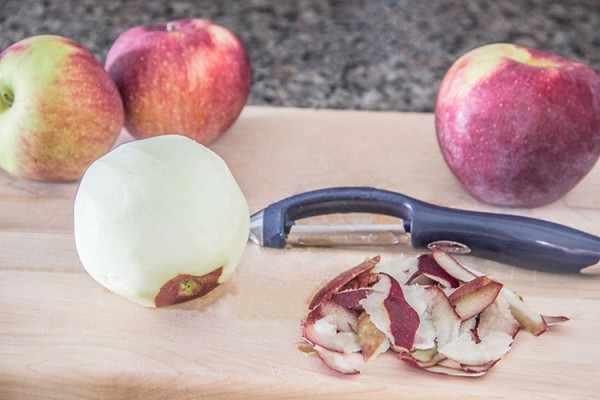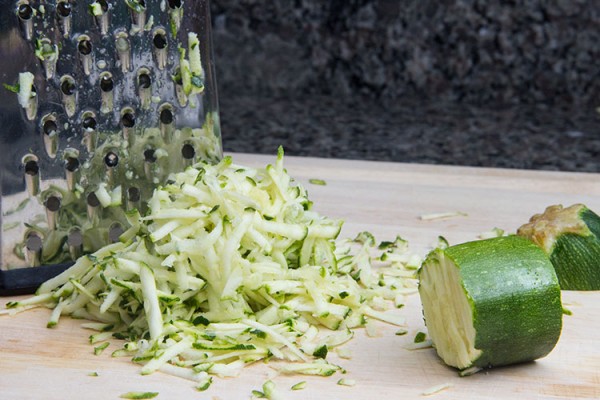Clean Eating Basics: Top 6 Kitchen Tools
Mar 02, 2015 in clean eating, clean eating kitchen basics, basics, clean, clean eating, eating clean, kitchen, tools, 3. Read the original on: The Scrumptious Pumpkin
In terms of clean eating basics, it’s all about fresh, whole, all-natural ingredients.
So feeling really confident about preparing all those fresh, clean ingredients is key.
You’ll never stick with eating clean over the long-term if it feels more like a chore.
So here’s the secret to making cooking with clean ingredients a fun activity you actually look forward to:
Stock your kitchen with the right cooking tools.
When I first started cooking with fresh ingredients and eating clean, I struggled with too-old or too-small or too-cheap equipment.
I’d spend way too much time trying to chop vegetables with a dull knife on a tiny, overflowing cutting board.
I’d skip important steps in cookbook recipes because I didn’t have the right tool.
As I slowly started buying modern, high-quality kitchen tools, I finally got it.
Having the right equipment will:
- save you so much time – and spare you so much frustration – in the kitchen
- make the cooking process run more smoothly, so you’ll feel confident, even if you’re just a beginner
- make cooking more fun and appealing. When you purchase a great, high quality kitchen tool you love, you’ll find yourself looking forward to using it.
If you want to really enjoy eating clean and cooking with fresh ingredients – and really stick with it over the long-term – it’s so worth it to invest in high quality, long-lasting kitchen tools.
Here are the Top 7 Kitchen Basics for Clean Eating:
1. Clean Eating Basics: Good Quality Chef’s Knife
Nothing is so helpful – in terms of saving you effort and time – as a high quality, nicely sharpened chef’s knife.
If you’re interested in cooking with fresh, clean, whole ingredients, a good quality knife is the most worthy investment.
Because, although it’s the most pricy item on this list, you’ll find that you use it every single time you cook.
Chopping up an onion or carrot with a small, old, dull knife is a difficult, lengthy, labor-intensive process.
It can be enough to make you want to give up.
But a sharp chef’s knife slices quickly and easily and actually makes prep work fun (you’ll feel like a cooking show star in no time!)
Another good reason to make the investment: high quality chef’s knives are made to last for years and years and years, and many offer lifetime warranties to prove it.
To Make Your Investment Last:
- shop for a high quality knife that offers a lifetime warranty
- wash your knife by hand
- store it properly in its case or on a knife block
- have it sharpened regularly. Kitchen supply stores (do a Google search to find one near your town) and kitchen retail shops (like Sur La Table) offer knife sharpening.
Clean Eating Basics: My Favorite Chef’s Knives
2. Clean Eating Basics: Large Wooden Cutting Board
A large wooden cutting board is listed second on this list because it’s the ultimate best buddy of the chef’s knife.
Trying to chop up veggies on a tiny, overflowing cutting board always ends in complete frustration (and a big mess).
Once you have a good chef’s knife, you’ve got to give yourself the room to use it (and the perfect surface for the knife to glide over).
A thick, large wooden cutting board offers the perfect cutting surface for your knife, as well as plenty of room to chop and dice every one of the fresh ingredients you’ll need for your recipe (aside from seafood and meats, see #3 on the list for more on that).
I recommend a board that’s at least 18 inches by 12.5 inches. My favorite board is 24 inches by 18 inches, and 2 inches thick.
Know that a quality wooden cutting board is really heavy, and it’s a tool you’ll use daily, so just designate a spot on the countertop where it will always sit (right near the stove top is best, so you can easily toss chopped veggies into pots for cooking).
To Make Your Investment Last:
- wash the board with a cloth soaked in hot, soapy water, and immediately dry it (never put the board in the dishwasher or leave it soaking in the sink – leaving it wet can warp it).
- for extra disinfecting power, spray down the cutting board with white vinegar. Vinegar will also neutralize any odors (from garlic and onion, for example).
- every three weeks or so, use a towel to coat the board with a layer of melted coconut oil. This protects it from cracking, splitting, and knife damage.
Clean Eating Basics: My Favorite Large Wooden Cutting Boards (Plus Coconut Oil to Protect)
3.) Clean Eating Basics: Second Cutting Board (If You Eat Meat or Seafood)
If you cook with any type of meat or seafood, including chicken, pork, fish, etc., you should have a second cutting board that you use just for meat preparation.
Why?
Just as an extra safety precaution, since meat can harbor bacteria and cause food-borne illness.
That’s normally not a problem, since it’s usually cooked at high temperatures, killing any bacteria.
But the fresh fruits and vegetables you prepare on your large wooden cutting board may not be cooked at all.
So, to avoid any chance of cross contamination, your heavy wooden cutting board should be used for fresh produce only.
And if you ever prepare raw seafood, such as tuna or sushi, you’ll need a separate cutting board for that as well.
4.) Clean Eating Basics: Vegetable Peeler
If you’d like to eat clean and cook with fresh, whole ingredients, a good quality vegetable peeler is a big, huge help.
Cheaper peelers can become very dull, so the old one from 1990 in the back of your drawer will make veggie prep a very lengthy and painful process.
But a sharp, good quality new peeler makes the task quick and easy.
Clean Eating Basics: My Favorite Vegetable Peelers
5. Clean Eating Basics: Boxed Grater
Clean eating is all about cooking with fresh, whole fruits and vegetables.
And – from shredded potatoes for fritters, to shredded carrots for soups and salads, to shredded onions for homemade sauces – grated veggies are perfect for mixing things up and making fresh ingredients taste interesting.
(For more inspiration, try these Zucchini Quinoa Parmesan Fritters using grated zucchini.)
Boxed graters are also critical for shredding real, fresh cheeses.
Clean Eating Basics: My Favorite Boxed Graters
6. Clean Eating Basics: Colander and Strainer
Colanders and strainers are super useful for preparing just about every kind of clean, whole ingredient.
I include them both in the same category since they both serve the same purpose of draining liquids from ingredients.
Here are the differences between the two (stock up on one of each for your kitchen):
- A large (at least 5-quart) colander is necessary for rinsing beans and fresh produce like berries and grapes. It’s also necessary for draining boiled vegetables and cooked whole wheat pasta. For the most natural, highest quality colander, look for one made with 18/10 stainless steel – it will last a lifetime.
- A fine mesh strainer is necessary for rinsing and draining small grains like quinoa or brown rice. It also comes in handy to drain excess liquid from clean eating ingredients like yogurt or frozen chopped spinach. Again, look for an 18/10 stainless steel version for the most natural, highest quality, longest-lasting strainer.
Clean Eating Basics: My Favorite Colanders and Strainers
The post Clean Eating Basics: Top 6 Kitchen Tools appeared first on The Scrumptious Pumpkin.
Read the original on: The Scrumptious Pumpkin
The Scrumptious Pumpkin, Jennifer Whitford
Transforming organic, fresh, whole ingredients into easy, everyday delicious dishes







































